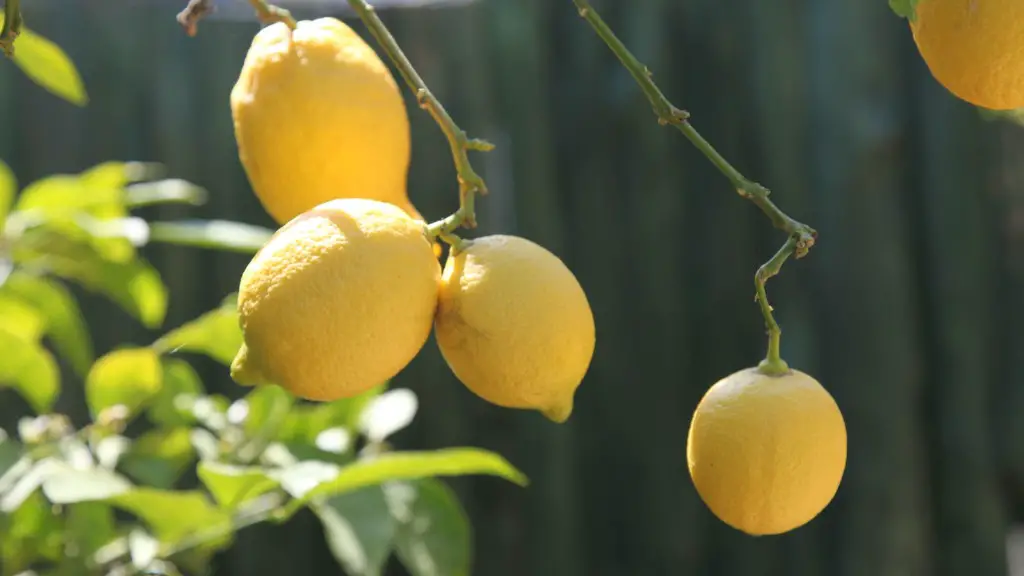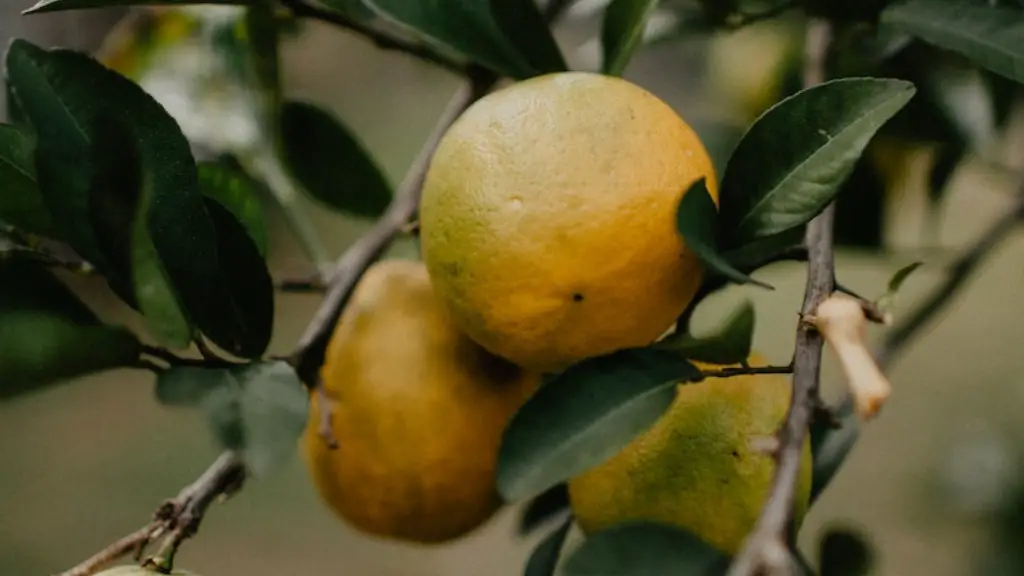Meyer lemons are a popular, citrusy treat that gardeners all over the world enjoy harvesting. If you are interested in growing your own Meyer lemon tree, there are a few considerations you should take into account to ensure that it produces fruit. Firstly, Meyer lemons need a lot of direct sunlight, so it’s important to place the tree in an area that gets at least six hours of full sun exposure per day. Secondly, the tree will need a spot with well drained, loamy soil with a pH balance of 6.5-7.5. Thirdly, trees need water to produce fruit, and Meyer lemons should be watered regularly but not too frequently. Fourthly, pruning is an essential part of fruit production as it encourages growth and improves air circulation. Fifthly, it’s important to fertilize the tree regularly with a citrus-specific fertilizer to ensure the tree is getting all the necessary nutrients it needs. Finally, it’s important to note that Meyer lemons take some time to become established in the ground before they produce fruit. On average, an established Meyer lemon tree can start producing lemons after 3-4 years.
Fertilizing
Fertilizing is an essential part of growing Meyer lemon trees, as it ensures that the tree is getting all the nutrients it needs to produce fruit. Citrus-specific fertilizer should be applied in the springtime and again in the early fall. It is recommended that a 15-5-15 fertilizer should be used, as this will ensure that the tree is getting plenty of nitrogen, phosphorus, and potassium. Overfertilizing can be avoided by spread the fertilizer around the tree, keeping a careful eye on the soil’s pH balance.
Water
Fruit production requires a tree to be well hydrated, and the same is true for the Meyer lemon tree. The tree should be watered regularly, but it is important not to over-water it; too much water can cause the soil to become soggy and increase the risk of root rot or fungal disease. The soil should be kept moist throughout the season, but make sure not to saturate the ground or keep it overly wet. It is recommended to check the water level twice a week by sticking a finger into the soil and making sure it is damp.
Pruning
Pruning is an important part of the tree’s maintenance, as it encourages growth and improves air circulation around the tree. Pruning of Meyer lemons should be done in late winter or early spring before the buds start to bloom. Thinning out the interior branches is recommended as it allows more light to reach the lemons. Make sure to cut off any dead or dying branches and trim back any excess growth.
Pollination
The Meyer lemon tree is a self-fertile type of fruit tree which does not require cross-pollination. That said, the presence of pollinators such as bees and other insects can help the tree set more fruit. Birds can also help pollinate the tree, so it is recommended to keep bird feeders in the area to attract them. Moreover, if you want to ensure your tree gets pollinated there are hand-held pollinators available, although that is not necessary.
Temperature Requirements
Meyer lemons require relatively low temperatures during their production period. They are a cold hardy variety so temperatures above 70°F can cause stress and cause the tree to drop some of its lemons. Planting your tree in a spot in your garden that offers some shade is recommended and can help you keep the temperature to an optimal level.
Harvesting
When it comes time to harvest your Meyer lemons, the timing can be a bit tricky. It is important to wait until the lemons have developed a bright yellow color, as this will indicate that they are ripe. Pick the lemons gently with your fingers to avoid bruising them and store them in a cool, dry place for up to two weeks.
Disease Prevention
It is important to keep an eye out for any sign of disease when growing a Meyer lemon tree. Make sure to inspect the tree regularly and look out for signs of yellowing leaves or wilted branches which could indicate it is under stress and at risk of a disease. If you find any signs of a disease, it is best to take immediate action to treat it, as this will ensure the tree maintains a healthy environment and produces a good yield of fruit.
Pests
Meyer lemon trees can suffer from insect pests like aphids, mealybugs, and whitefly, so it is important to take preventive measures to keep them away from the tree. Keep your tree clean and free from any fallen leaves or fruit to avoid providing them with a place to hide. Additionally, continually inspect the tree for any infestation of pests and use a natural insecticide if necessary.
Fungal Disease
Fungal diseases can be a big problem for Meyer lemon trees, and it is important to take preventive measures to prevent it from occurring. Make sure to water the tree in the morning so the foliage has a chance to dry during the day, as moist leaves can increase the risk of fungal infection. Additionally, prune away any dead or diseased branches, and deep water the trees to help ensure that the soil is not soggy or too wet.


